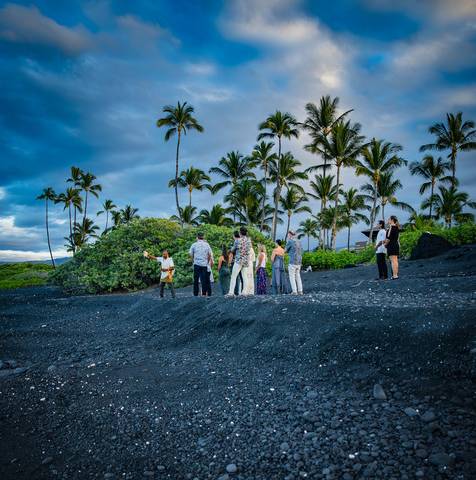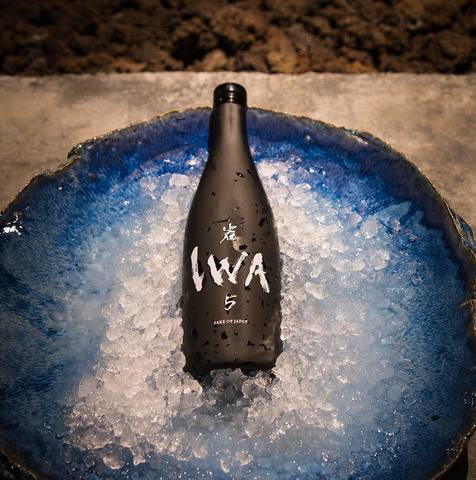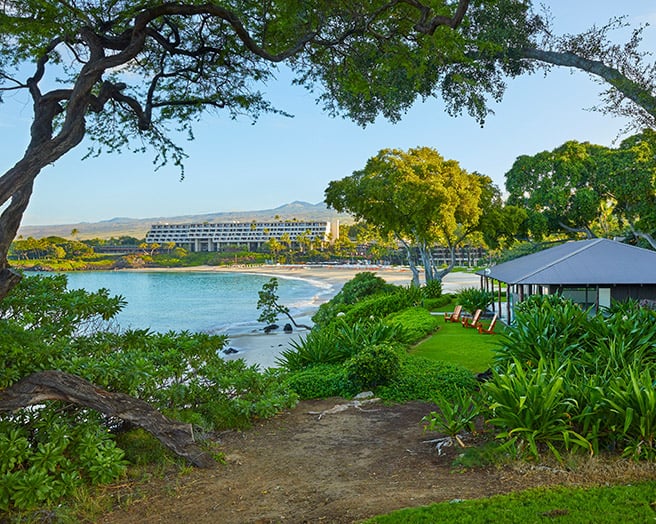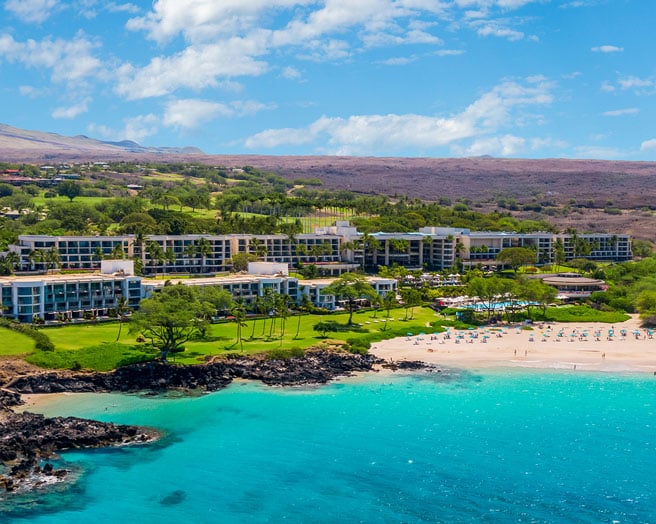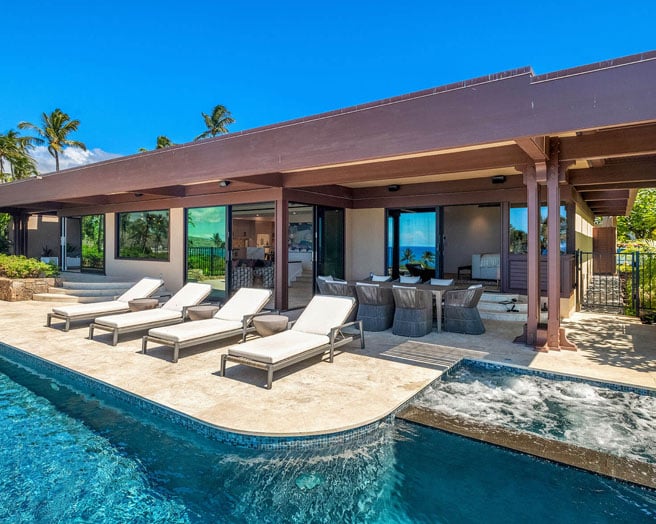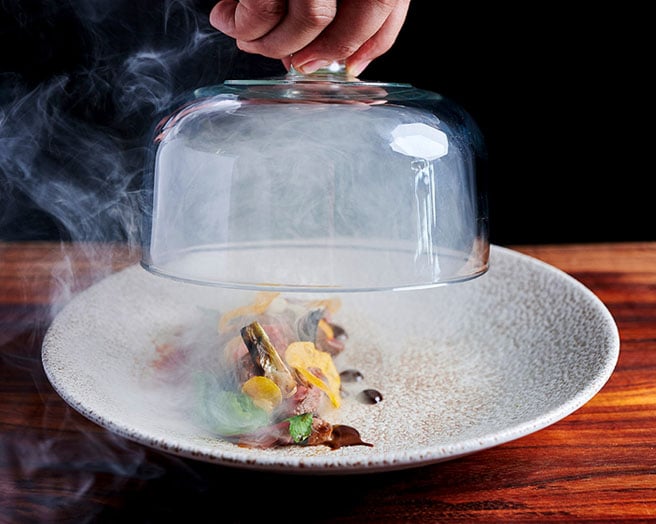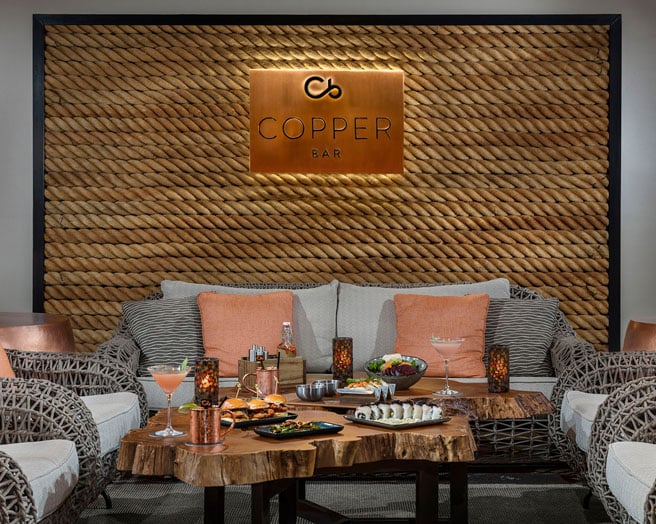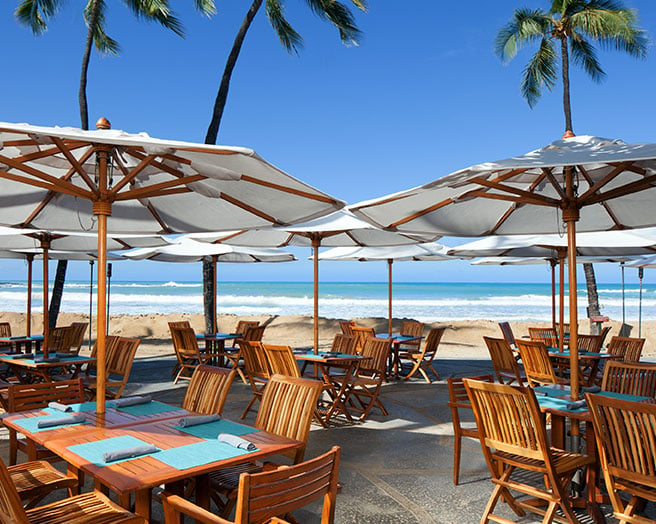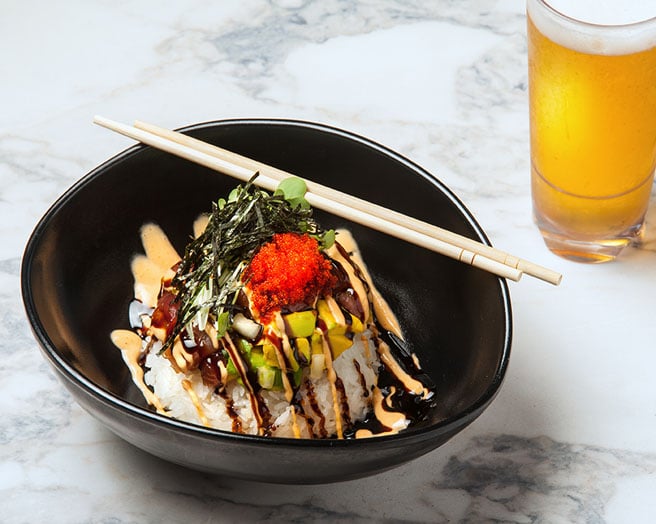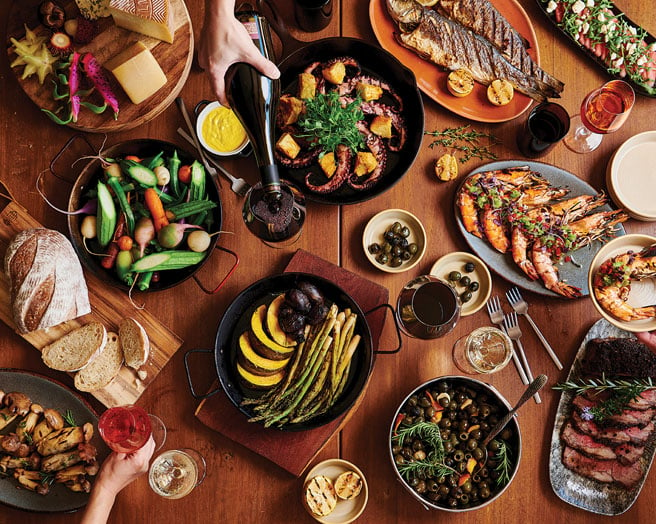Legendary Tastemakers
By Krystal Kakimotov
After nearly three decades serving as Dom Pérignon’s Chef de Cave, and with an illustrious career behind him, many anticipated legendary winemaker, Richard Geoffroy, to ease into retirement and enjoy the rest he so greatly earned. Geoffroy used the end of his career in wine as an opportunity, however, to take on a new challenge by entering the world of sake. Founding IWA in 2019, Geoffroy’s sake company has quickly earned a cult-like following as it revolutionizes the sake world, transcending tradition while respecting the roots of sake. By approaching sake with the same daring spirit and exacting standards he once brought to champagne, Geoffroy signals a new chapter of creativity, reinvention and cultural exchange.
Born in the heart of the Champagne region, Geoffroy was raised in a family where every member dedicated their life to the creation of wine. Despite his family’s deep roots in the industry, Geoffroy elected not to follow in the family profession by studying medicine at the University of Reims. Several years after earning his medical degree, the pull to the family profession — embedded deep in his DNA — emerged. He enrolled at the École Nationale d’OEnologie in Reims to study winemaking. Upon graduation, he traveled to Napa Valley to begin his work in wine cellars. He notes, “It was very humble work. This is somewhat reminiscent of how chefs progress in the kitchen. You start low on the hierarchy dragging hoses or doing small jobs until you get into the practical cellar work.” In these formative years, Geoffroy honed his technical prowess and developed an evolving sense of place — the idea that terroir, environment and tradition inform the character of each bottle.
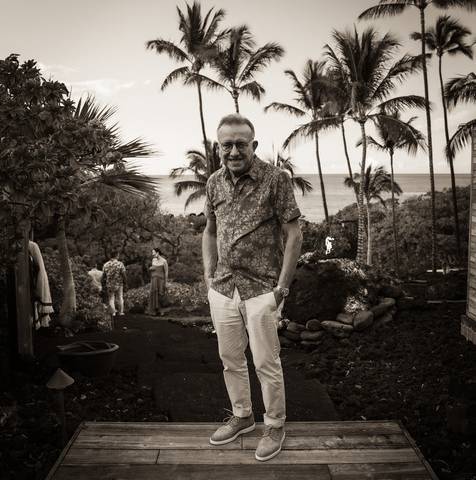
After gaining more experience, Moët contacted him to work as a technical advisor in Champagne which eventually led him to Dom Pérignon in 1990. As the fifth Chef de Cave de Dom Pérignon, Geoffroy was responsible for every aspect of champagne production. He earned a legacy as an all-star for the number of vintages he produced, including the risky 2003 vintage which has earned a reputation as being one of the best vintages ever released by the label. “Creating a new vintage is a fine line of balancing, because you must appreciate the unique expression of the wine, but, at the same time, you need to stick to the cellar recommendations,” Geoffroy notes. “To me, one of the most rewarding vintages was 2003 because it was the most challenging. It was a year of scorching heat, unknown to the region, which reconditioned the ripening of the fruits. We were required to change much in the winemaking and express the unique character of the vintage.” Here, his mastery of champagne set a precedent — revealing how pushing past limitations could unlock new dimensions of flavor and aroma.
Upon retiring in 2018, the ability to allow his creativity to run free pulled Geoffroy in the direction of sake. “With champagne, there are limits to your creativity. There is an element of the technique which has to be mastered, but a project cannot be about delivering the same thing again and again. There are limits in place because of terroir, appellation constraints and food regulation systems of Europe. All of this affects creativity,” reflects Geoffroy. With sake, Geoffroy can take the four cardinal elements of rice, koji (fermented cooked rice and/or soybeans), water and yeast, and allow his creativity to guide his actions. This newfound freedom would let him reshape expectations of what sake could be — bridging centuries-old practice with an innovative mindset reminiscent of his champagne days.
After numerous trips to Japan, he fell in love with its people and culture and established his sake brewery in Shiraiwa, which translates to “white rock,” and is the inspiration behind the IWA sake brand name. Geoffroy called on famed Japanese architect, Kengo Kuma, to build the brewery facility. The state-of-the-art building was inspired by local farm homes nestled in the nearby mountainside and pulls from the Edo period domestic architecture of the Toyama region, which features a single roof housing all the elements of the home or business. This blend of tradition and modernity echoes Geoffroy’s approach to sake itself — respecting the legacy of Japanese craftsmanship while gently evolving its form. For the brewery, this stylistic choice aligns with Geoffroy’s emphasis on harmony with all aspects of production flowing seamlessly under one roof.
Inspired by his time working with champagne, Geoffroy incorporates the techniques of assemblage (the method of blending grapes, terroir and vintage) and bottle maturation to add his own spin on the art of making sake. By delicately blending multiple rice varieties and classes of yeast, he works like a maestro fine-tuning his symphony of flavors that harmonize in each finished vintage. His first assemblage, IWA 1, was released in May 2020 and shifted the global expression of classic sake to emphasize equilibrium between nose and palate and gave the public a glimpse into his masterpiece of contradictions — a rich opulence balanced with restraint, weightlessness and intensity that was met with depth and length of flavor. In this way, he brought a centuries-old Japanese beverage into dialogue with international tastes, creating a new terroir defined not only by soil and climate, but by a global palate.
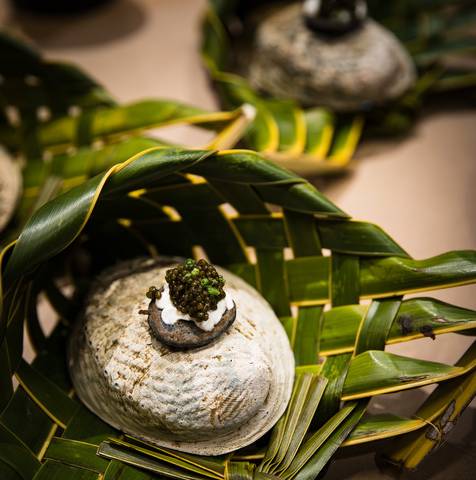
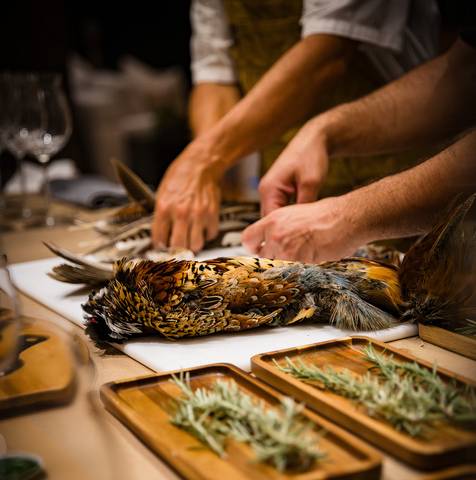
He has been able to produce an assemblage each year since his first release. As his company has grown, so too have fans of his work. Even within Japan, a nation known for its high value on tradition, he has received positive acclaim. When asked what the response was like, he said “I would have easily seen people in the industry having reservations on my sake. However, the response to IWA in Japan is overwhelming, and our business is better than anything we could have anticipated. Some characteristics of IWA are familiar, just reorganized into something they have never experienced. [The response] has been the most emotional thing I have ever gone through in my entire career.”
By weaving respect for tradition with an openness to new interpretations, Geoffroy encourages a broader cultural conversation — one that grants sake a stage equal to the great wines of the world.
Another disruptive element behind IWA is the emphasis on bottle maturation that Geoffroy prizes. “There is a known belief that sake does not age and that the shelf life is limited. Nothing organic remains the same for good. The process of maturation is number one, but only if it is for the better. IWA keeps developing in the bottle and improving,” said Geoffroy. As each year passes, and the cellared bottles of IWA mature, the flavors continue to evolve, resulting in a different flavor experience compared to its release. “At my current estimate, IWA will continue to improve in the bottle beyond 10 years, and it can be cellared like any of the great wines.”
This nuanced view of sake’s evolution over time deepens our understanding of terroir — no longer confined to vineyard soil, but extending into the alchemy that occurs inside the bottle.
In addition to its immense drinkability, IWA also wows consumers and chefs with its versatility in food pairings. Traditionally, Junmai daiginjo (premium sake with rice polished down to at least 50% and no added distillate), as the style of IWA, is typically served cold (40˚F – 60˚F) to room temperature. However, Geoffroy pushes the boundaries with wider ranges for his sake to be poured. From 33˚F – 35˚F, Reishu (chilled) sake tightens up, and there is a subtle play of textures. Next is the Hitohadakan (lukewarm or body temperature) level between 95˚F – 98˚F which heightens the sake’s sensuousness. This is followed by the Jokan (slightly hot) level at 113˚F where a soft viscosity and silky texture can be experienced. Finally, there is the Tobikirikan (extremely hot) level at 131˚F which features a rounder, thicker body. Each of these drinking levels allows for more food pairings to emerge. “The versatility is immense. It can be enjoyed with high-end caviar to dessert ... paired with seafood and even with bolder meats, cheeses and spices. By heating IWA, unprecedented layers arise for pairing. I keep pushing, experimenting, testing IWA against the greatest cuisines of the world.”
This fluid adaptability places sake into a rich culinary landscape, proving that its depth can rival — and at times surpass — the complexity of wines in global gastronomy.
Geoffroy put the versatility of IWA on full display at the Primal Harvest dinner hosted in December 2024 on Hawai‘i island. A collaborative dinner between Geoffroy and Executive Chef Nick Mastrascusa of Kūki‘o Golf & Beach Club is the culmination of a friendship between the pair that dates to 2015 when Geoffroy hosted Chef Nick and a group from Kūki‘o at Dom Pérignon. Geoffroy added that he immediately connected with Chef Nick, “We clicked right away on an intellectual, spiritual level. I like the idea of going so far, so extreme, and so does Chef Nick.” The two connected again earlier in 2024, along with Julia Fitzroy, vice president of IWA – US, for a dinner at The French Laundry in California. The group was enjoying paired courses with vintages of IWA, and a discussion about hosting their own dinner naturally arose, where ingredients were sourced via fishing, hunting and diving.
It took Chef Nick and his team about five days to harvest and collect all the ingredients for the dinner. Once the ingredients were secured, they convened to the kitchen where they opened a bottle of IWA to taste it. For Chef Nick, it was important to have a bit of IWA in their bodies “to make sure we are connected with what we are doing … to think about the flavor profiles we can call upon, what will pair, the different fruits or vegetables we will use.” In this sense, the very spirit of IWA guided culinary creativity — its flavor notes informing and inspiring each decision, its essence bridging sea, soil and skill.
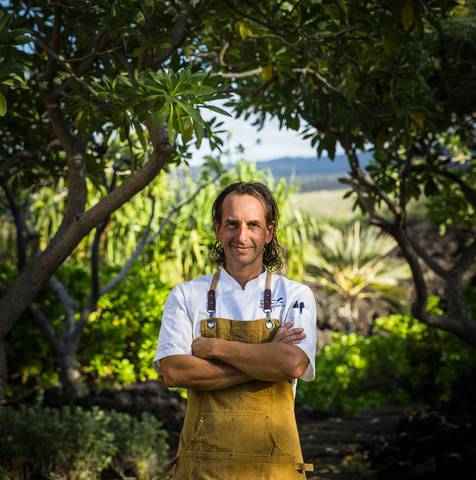
The unique dinner was held at a private residence in Kīholo Bay just as the sun was beginning to set. Here, the terroir of Hawai‘i came alive as Chef Nick channeled the island’s bounty into dishes as vibrant as the surrounding landscape. After a beachfront blessing by cultural practitioner Umi Cabrera-Zuke, followed by a toast of Dom Pérignon led by Kūki‘o Wine Director Chuck Wilson, the group tasted IWA on its own before engaging in the feast. During the meal, the culinary team unveiled course after course of exquisite pairings which only pushed IWA to new heights. While each course was striking, standouts included the spit-roasted spiny lobster served with hearts of palm purée and citrus paired with IWA Assemblage 3 (2021) served chilled, and the pheasant agnolotti served with white alba truffles, 24-month aged parmigiano and crushed croutons paired with IWA Assemblage 2 (2020) served at cellar temperature. Geoffroy and Chef Nick both agree that the most spectacular and striking pairing of the night was the kiawe-grilled wild boar served with crispy rice, purplette onions and spicy yakiniku sauce paired with IWA Assemblage (2019) served at body temperature. The key to the dish was the preparation, as Chef Nick notes, “Wild boar can be tough, and, in this case, it was delicious and tender. It had a lot to do with the preparation of grilling the boar over the open fire.” In these pairings, the sense of place was unmistakable: Hawai‘i’s fertile environment and Chef Nick’s technique merged perfectly with IWA’s layered complexity, forging an unforgettable culinary moment.
For Geoffroy, the pairing of IWA with the cuisine of Hawai‘i felt like a natural combination. “With pan-Asian foods of the Pacific, there is an ease with IWA. Culturally, the connection is more natural and more organic than with wine. People are looking for alternatives to wine and are ready to venture out to experience different emotions with their pairings. IWA can offer them the highest level of discovery.” In this terroir — part oceanic garden, part cultural crossroads — IWA found a home as vibrant and open-hearted as its native Shiraiwa.
One of Geoffroy’s goals in the coming years is to continue contributing to Japan and help sake branch out to become universally beloved. Currently, sake continues to be most consumed in Japan, but Geoffroy’s goal is to have sake be the conduit to cross cultures, blending the lines between food, people and culture. “Sake, at its highest, can be on par with the greatest wines of the world. We are reaching out to the people of the world to embrace sake. That is the only way the industry can bounce up, and it is the project of IWA.”
This vision, much like the journey of Geoffroy himself, transcends borders. What began in Champagne’s storied vineyards and continued through Japan’s reverent sake traditions now radiates outward, inviting all corners of the globe to celebrate the universal language of taste, innovation and communal joy.
Learn more about IWA Sake at iwa-sake.jp
